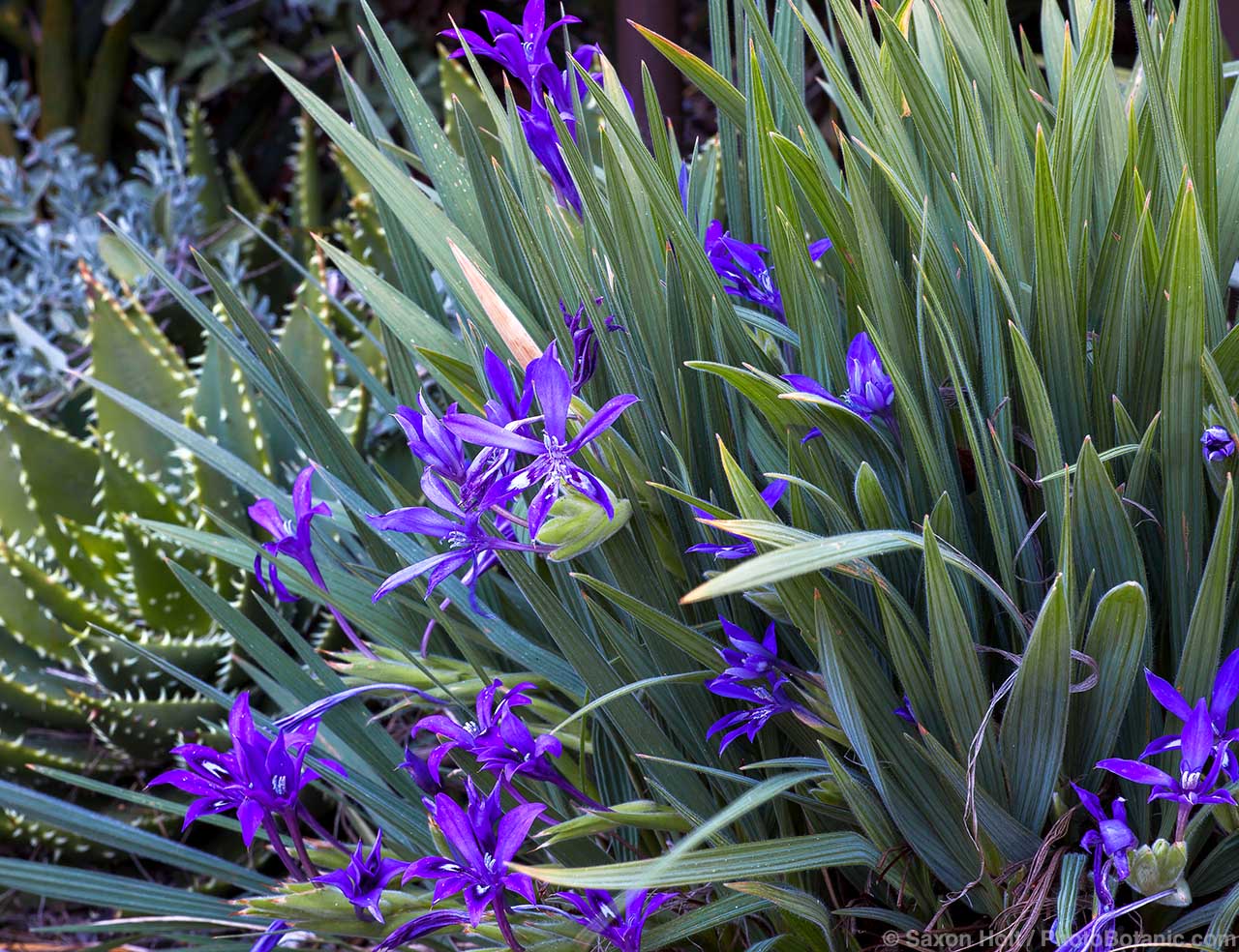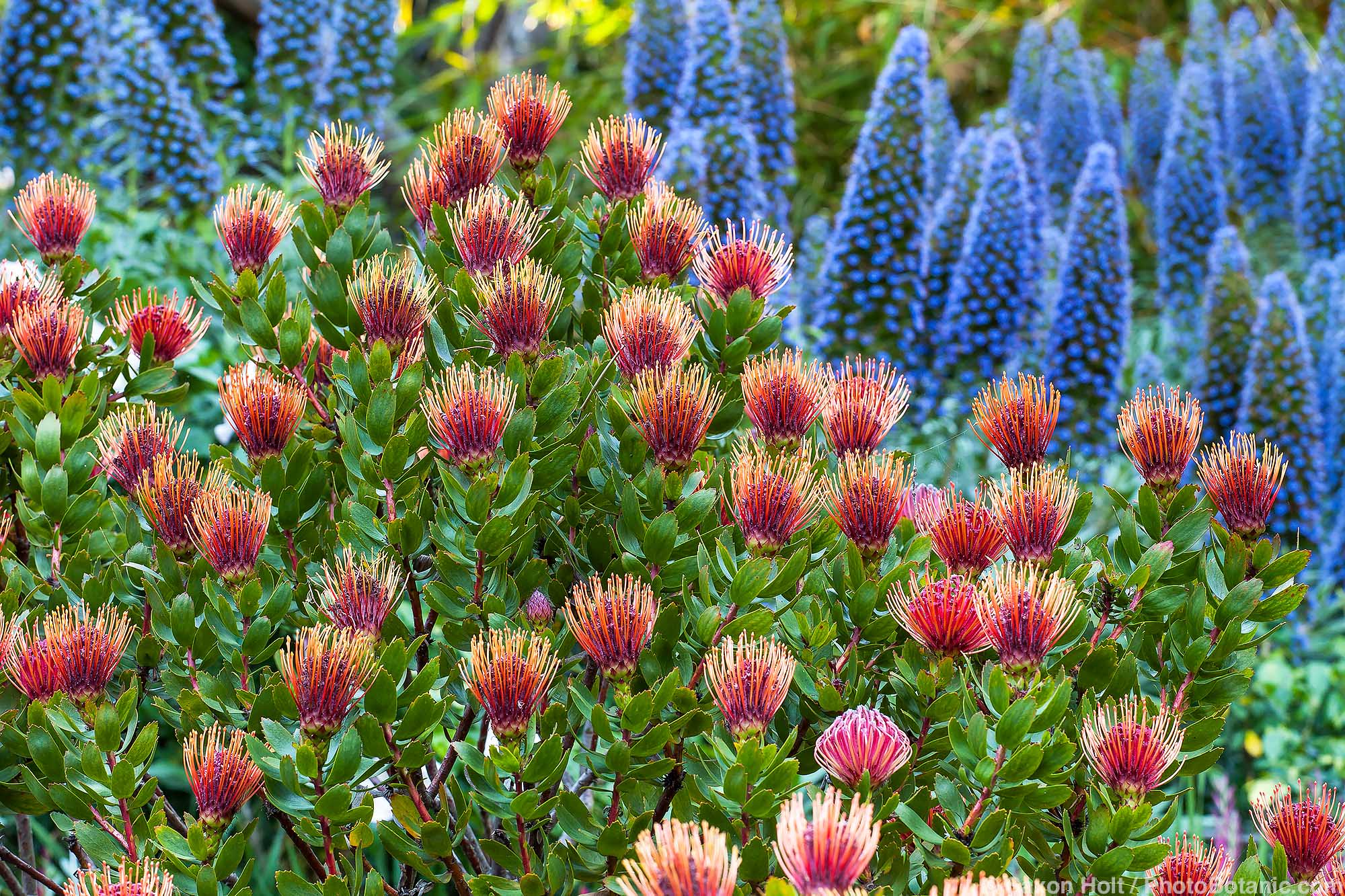Ornamental Alliums
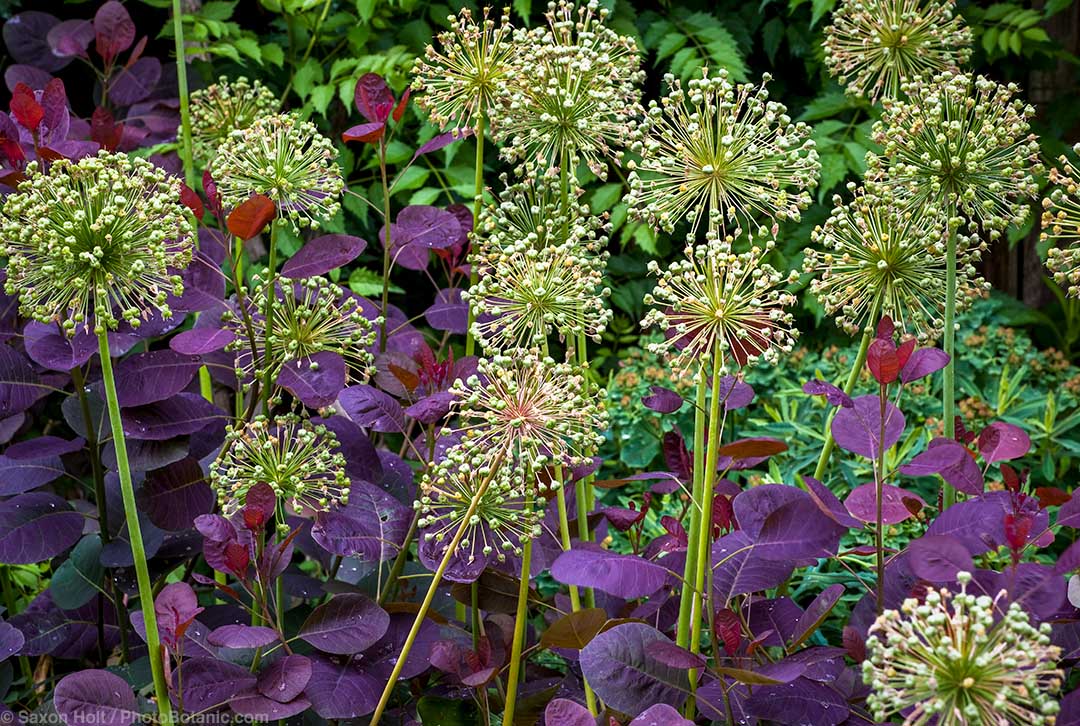
Share This!
I’ve always loved the delicate little alliums native to the west coast of North America and have long ignored the larger Mediterranean and Asian species, especially their highly bred, look-at-me cultivars, as just too formal or artificial-looking for my laid-back, mostly summer-dry garden.
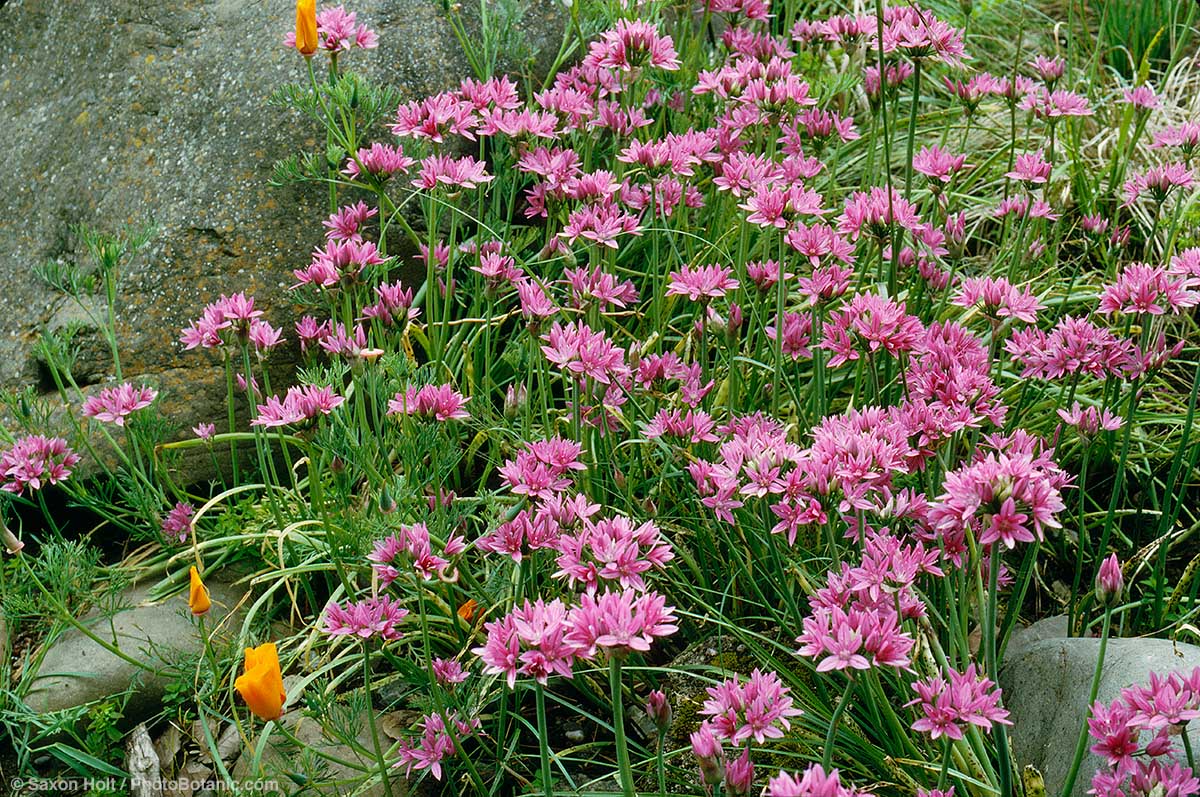
Allium unifolium, native to coastal mountains from southern Oregon to northern Baja California
But, in much the same way that yellow flowers come to be appreciated by maturing gardeners as the youthful obsession with pinks and lavenders gives way, plants once considered unsuitable may eventually be seen as welcome counterpoints.

Allium aflatunense seedheads and leaves of ‘Royal Purple’ smokebush make an elegant combination
For any gardener who has even occasionally arranged plants in starkly simple, architectural ways (the more sculptural succulents immediately spring to mind), the larger, exotic alliums are an obvious candidate for such striking effects. Even when dry, the whimsical flowerheads on assertively upright stems can bring a satisfying sense of order to an otherwise undisciplined spring to late-summer garden.

Allium ‘Globemaster’ brings structure to a spring meadow garden
Choices in alliums range widely from those with a few floppy, grasslike or strap-shaped leaves and small flowerheads on foot-tall stems to showy, 8- to 10-inch-wide globes on stems to four or more feet tall. All bear tiny, star-shaped or cup-shaped flowers in tight or loose, oval to rounded, sometimes flat-topped or nodding clusters. Colors range from pale to dark pink, lavender, or purple (most common) to white, yellow, or rarely blue.
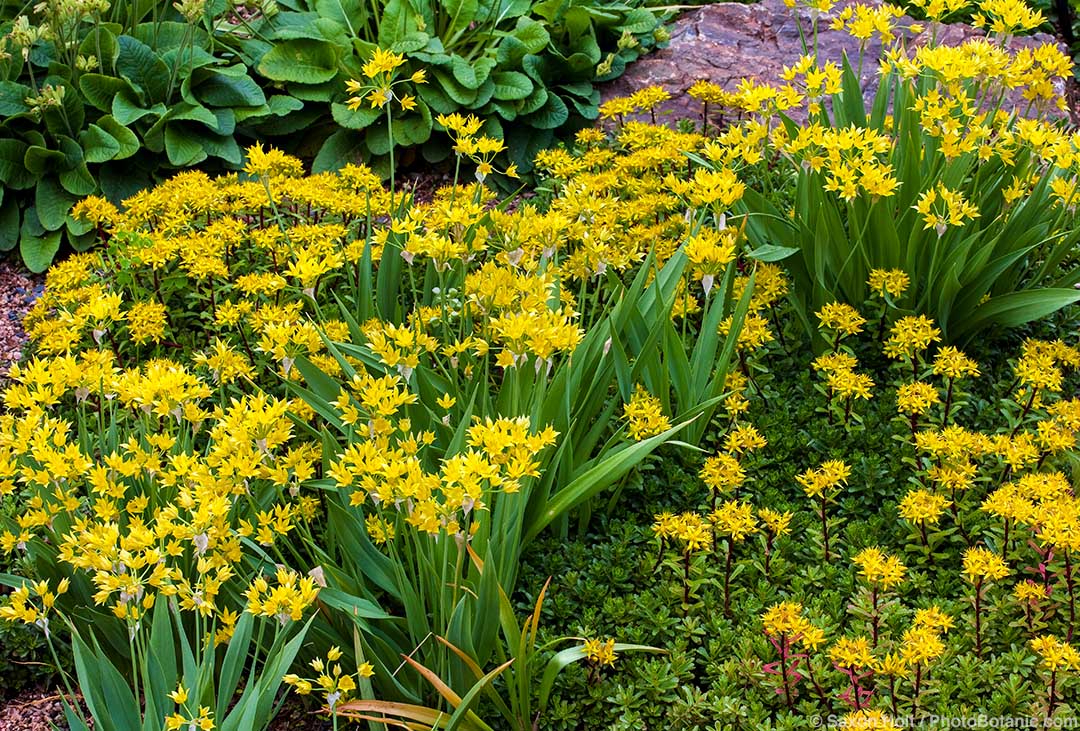
Allium moly (left) with Sedum kamtschaticum ‘Weihenstephaner Gold’
Some alliums are visually powerful enough to be placed in groups of three or four, while others make an impact only in drifts of several dozen or more. Over time, spreading slowly by bulb offsets or rhizomes and by seed, small to large colonies may form. A few alliums (e.g., A. neapolitanum) spread fast enough to be considered invasive.
Although allium flowers often have little fragrance, the leaves, stems, and even the bulbs of many, perhaps most, have just enough of an oniony smell to discourage deer and possibly even gophers. Flowers are long-lasting fresh or dry, either in arrangements or left on the plant for late-season garden interest and winter wildlife forage. Bees and butterflies are drawn to the flowers and small seed-eating birds favor the dried seedheads.
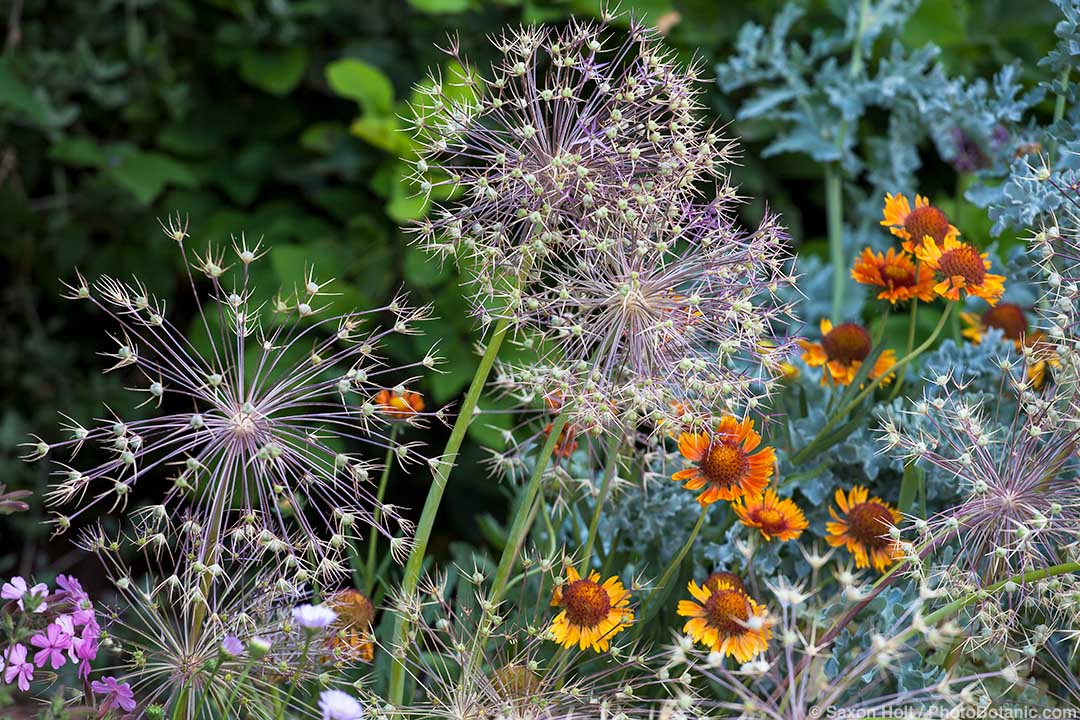
Allium cristophii seedheads
Among low-growing, more delicate-looking species, Allium unifolium, with pale pink to pinkish lavender flowers, A. hyalinum, with white or pink-tinted white flowers, A. dichlamydeum, with reddish purple flowers, and A. cratericola, with rose-pink flowers, are stand-out examples native to North America’s west coast. A. moly, native to the western Mediterranean region, bears loose clusters of bright yellow, spring or early-summer flowers on stems a little over a foot tall. A. flavum, more widely native to the Mediterranean region, is similar but slightly taller and later to bloom. A. cernuum, native to a wide area of North America, has nodding, pale pink summer flowers on stems to 16 inches tall.
Two small to mid-sized alliums offer an unusual take on the genus. Allium ‘Millenium’, a low-seeding hybrid of uncertain parentage, forms a dense clump of persistent, narrowly linear, bright green leaves about a foot tall and wide. Its small, rose-purple, midsummer flowers rise up on stems to 18 inches tall. A. karataviense, native to semi-arid steppes of central Asia, has broadly strap-shaped, mottled, grayish green leaves and 8- to 10-inch-wide, pale silvery lavender, late-spring flowerheads on 12- to 18-inch stems. An unusual and attractive mid-sized allium, this one seems especially fussy about drainage.
Slightly taller are Allium sphaerocephalon, native to southern Europe and western Asia, with 2-inch-wide, reddish purple, midsummer flowerheads on 2-foot stems, and A. caeruleum, native to central Asia, with 2-inch-wide, blue flowerheads on 2-foot stems in spring or early summer. A. cristophii, native to Turkestan, bears silvery purple flowers in 10- to 12-inch-wide, globe-shaped heads on 18- to 30-inch stems in early summer. ‘Globemaster’ is a hybrid of A. cristophii and A. macleanii, another purple-flowered species from the mountains of central and western Asia.
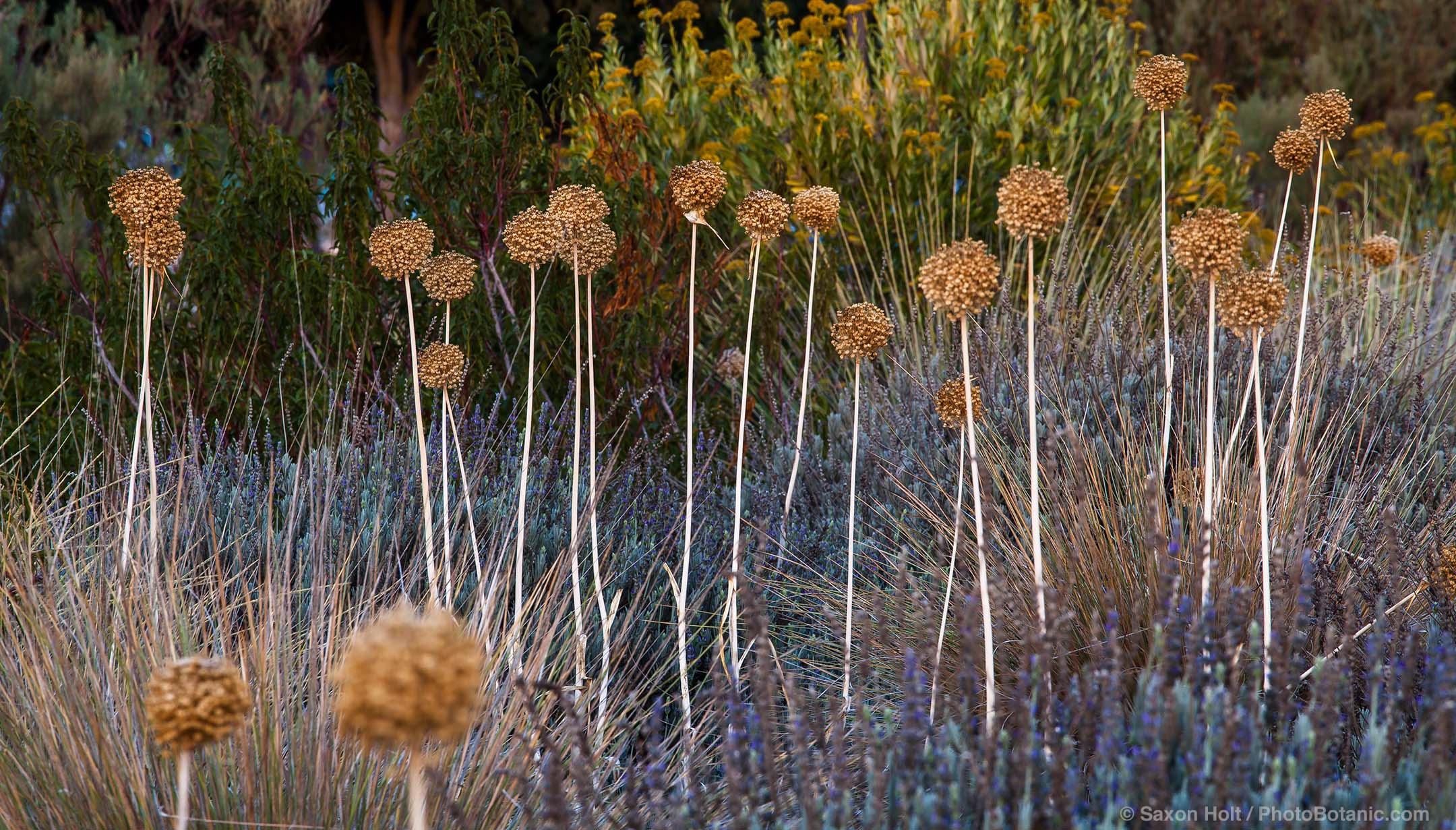
Seedheads of elephant garlic (Allium ampeloprasum var. ampeloprasum)
Among the many tall alliums are two species with purple flowers on 3- to 5-foot stems. Allium giganteum, from Iran, is slightly larger than A. aflatunense, from Siberia and the Himalayas, and both are early bloomers. ‘Purple Sensation’, a cross between A. aflatunense and A. hollandicum, is one of the earliest to flower.
Most alliums are best planted in fall. Most prefer full sun, although a little shade or afternoon shade may be accepted, especially in hot-summer climates. Good drainage is the key to success. Soggy soils can be fatal.
Share This!
Related Articles
By: Nora Harlow
By: Nora Harlow
By: Nora Harlow




